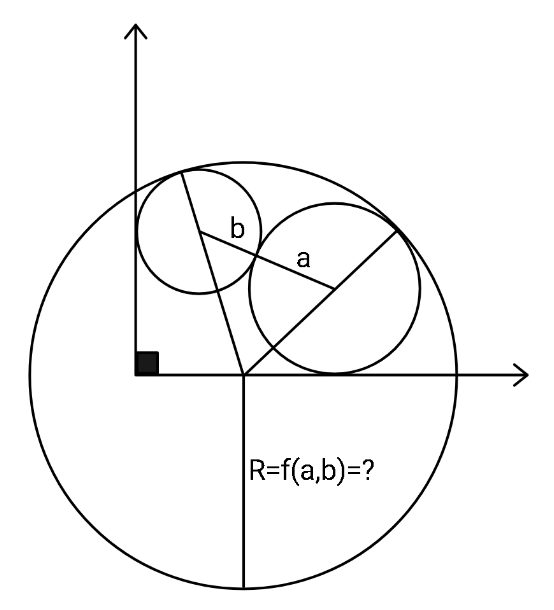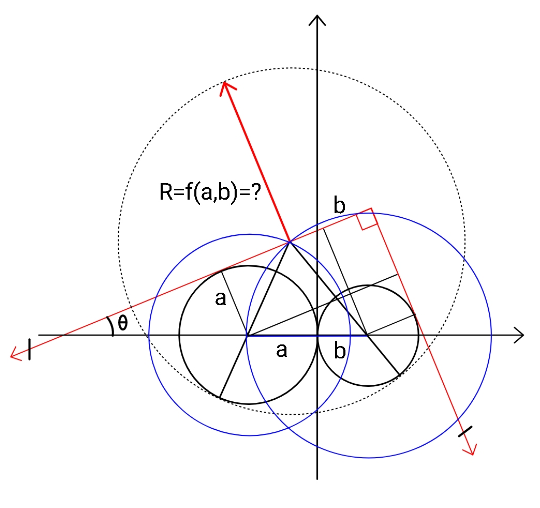
Question and Answers Forum
Question Number 158803 by ajfour last updated on 09/Nov/21

Commented by ajfour last updated on 09/Nov/21

Answered by ajfour last updated on 09/Nov/21

Commented by ajfour last updated on 09/Nov/21
![Let (a/(sin θ))=p condider T(−h,k) on it. (k/(p+a−h))=tan θ=m (a−h)^2 +(p+a−h)^2 m^2 =(r−a)^2 (b+h)^2 +(p+a−h)^2 m^2 =(r−b)^2 subtracting (a−b−2h)(a+b) =(2r−a−b)(b−a) 2r=a+b+(((a+b)/(a−b))){2h−(a−b)} ((d(2r))/dh)=2(((a+b)/(a−b))) [constant>0] but limits of h is difficult to guess. ......](Q158820.png)
| ||
Question and Answers Forum | ||
Question Number 158803 by ajfour last updated on 09/Nov/21 | ||
 | ||
Commented by ajfour last updated on 09/Nov/21 | ||
 | ||
Answered by ajfour last updated on 09/Nov/21 | ||
 | ||
Commented by ajfour last updated on 09/Nov/21 | ||
![Let (a/(sin θ))=p condider T(−h,k) on it. (k/(p+a−h))=tan θ=m (a−h)^2 +(p+a−h)^2 m^2 =(r−a)^2 (b+h)^2 +(p+a−h)^2 m^2 =(r−b)^2 subtracting (a−b−2h)(a+b) =(2r−a−b)(b−a) 2r=a+b+(((a+b)/(a−b))){2h−(a−b)} ((d(2r))/dh)=2(((a+b)/(a−b))) [constant>0] but limits of h is difficult to guess. ......](Q158820.png) | ||